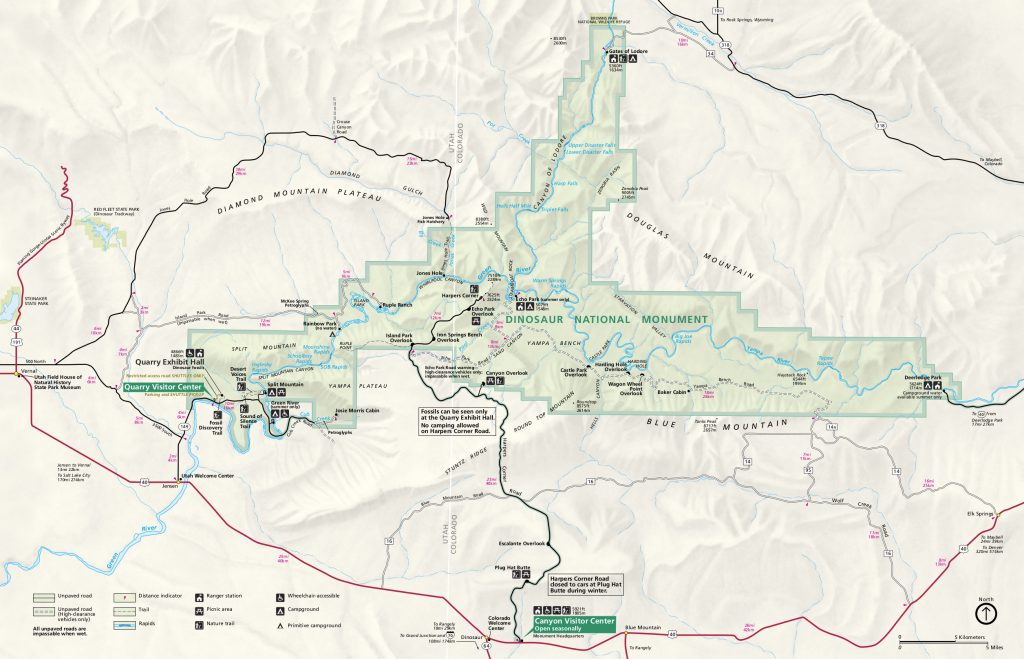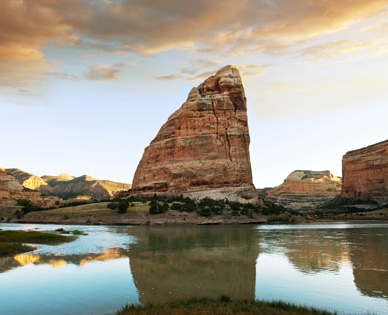Colorado’s Yampa River Archaeology
Yampa River and its Archaeology: Atlantis of the Desert
Travel back 1400 years when taking a Yampa River raft trip and seeing its amazing archaeology. Imagine that you are walking up and down a river bed gathering food, storing it in a shady cave along with sacred necklaces made from feathers of birds collected thousands of miles from where you are now. You carefully place your fortune of corn, beans and collected berries in a rock box knowing that you will return to this place, turn the corn into flour and retrieve the necklace.
This is a real place, as are its people the Fremont culture. It’s called Mantle cave and is located about a half mile from the banks of the Yampa River in Dinosaur National Monument. The cave is enormous, 25 yards deep and 300 yards long, shaded almost year-round making it the perfect place for food storage and escaping the weather extremes of Northwest Colorado’s summer heat, spring and fall’s cold. When archaeologist’s first excavated the cave, they found granaries (food storage boxes) full of corn, grinding stones, headdresses and necklaces made from bird feathers founds in South America, beaded shoes and much more.
Mantles Cave is a popular stop along the Yampa River, other stops will lead you to petroglyphs and pictographs, rock art left behind from the early cultures that inhabited the Yampa River Canyon. The Native American rock artwork is identified by it simple boxy shapes. Human figures drawn from tetrahedral bodies, swirls, etchings of big horns sheep, fishing nets, and many more representations of the prehistoric life in the canyon decorate the creamy sandstone walls, beautiful in its simplicity.
Though there is no certainty with the Fremont, theories exist regarding the artwork: that some works are more significant than others, that only elders were permitted to paint the canyon, the painting could have been some kind of ceremony asking for good fortune or advice from ancestors or gods. Or simply entertainment for children, though this last theory, seems unlikely. The panels throughout the canyon appear to be aimed towards purposes. Simple sketches of sheep and fish may indicate good food sources. Another, more intricate panel, nicknamed the wedding panel, is six human height figures holding hands which could have been used for a bonding ceremony. Another, appears to be 20 warriors preparing for battle created from tiny dots, archaeologist believe this panel was likely made by elders asking for blessings or help from gods.
Whatever the Fremont tribe intended with the art work and the way they lived, the mystery is captivating and beautiful. The tribe prospered in this seemingly harsh environment for almost 700 years and then suddenly gone. The remains of the desert Atlantis is worth seeing for yourself.
It’s natural to wonder what the drawings mean: Is the artwork religious, entertainment, markings to remember the way back? Why spend the time to create a paint that would last thousands of years? Why paint the figures they did? The answer: no idea.
Suddenly, 700 years ago, all evidence of the Fremont culture disappears. Many things could have wiped out the community: flood, famine, drought, or competition from another tribe, all theories that circulate among archaeologists today. However, the facts remain a mystery, as no currently living tribe claims the Fremont as their ancestors. Archaeologist’s infer certain things about the way their cultures lived based on the artifacts they left behind, that they were semi-nomadic farmers. Based on the presence of corn in the granaries, the tribe farmed and the tribe moved with the seasons, based on the spread of their artwork throughout the South West, and the feathers integrated into their clothing from South American birds.
The ability to visit these cultural sites along the Yampa River and Green River through Dinosaur National Monument is just one of the fabulous experiences you will have on a multi-day rafting trip when visiting this area of Utah and Colorado. These sites are very important and deserve the up most respect and protection. White water river rafting on the Yampa River may have been your initial reason for booking this adventure. When your trip ends the memories of the incredible archaeology, great times around the evenings campfire, the new friends you have made will forever be etched in your mind.

